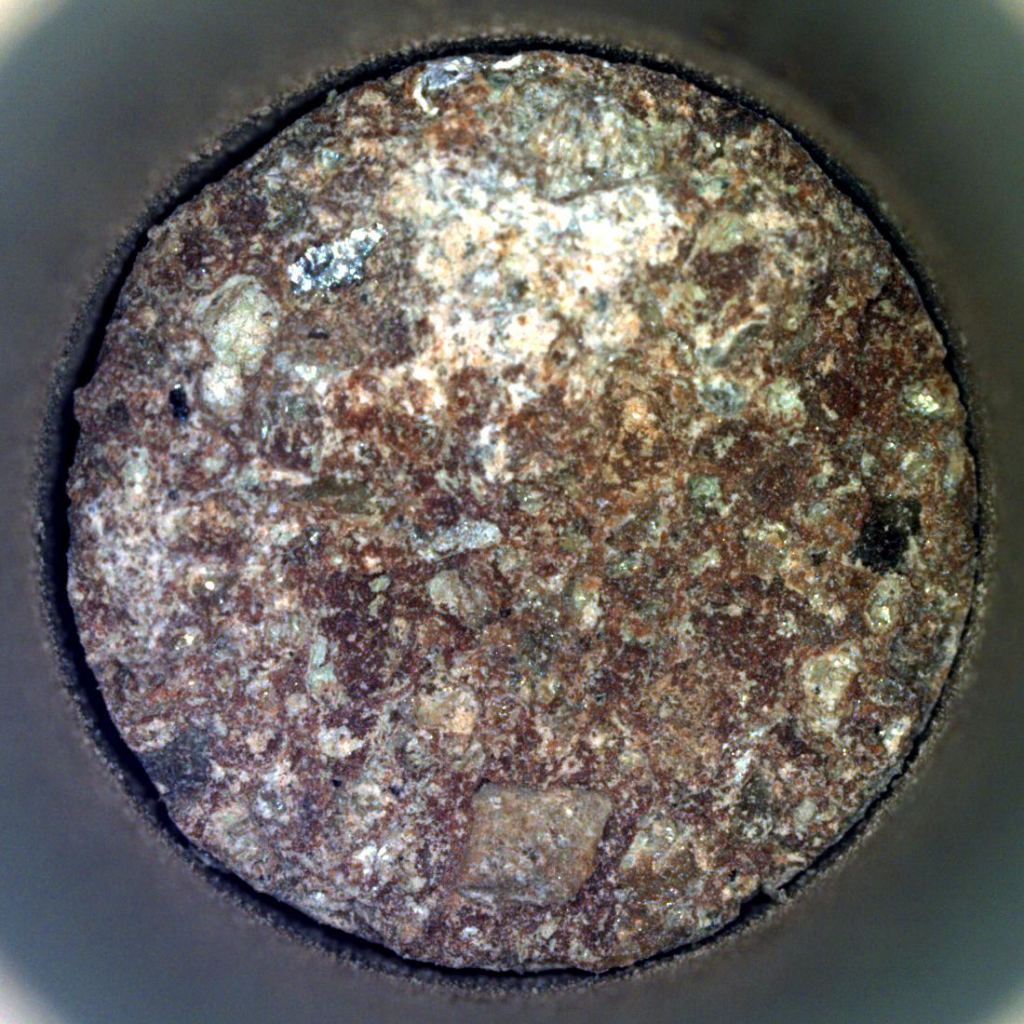Since the Viking 1 and 2missions visited Mars in 1976, scientists have been confronted with mounting evidence that Mars once had flowing water on its surface. The images collected by the twin Viking landers and orbiters showed clear signs of ancient flow channels, alluvial deposits, and weathered rocks. Thanks to the dozens of additional orbiters, landers, and rovers sent that have been sent there since scientists have been getting a clearer picture of what Mars once looked like. At the end of this journey, they hope to find evidence (if there's any to be found) that Mars once supported life and still does today.
The latest evidence of Mars' warmer watery past comes to us courtesy of NASA's Perseverance rover, which continues to explore the Jezero Crater and obtain samples for the first Mars sample-return mission. On Friday, June 23rd, the rover obtained its 20th sample, which was drilled from a rocky outcropping known as "Emerald Lake." Named "Otis Peak," this sample is part of an outcropping formed by mineral deposits transported by an ancient river and could contain invaluable geological information about the many places these minerals came from.
Shortly after collecting the core sample, Perseverance took an image with its Sampling and Caching System Camera (CacheCam) on its underbelly. As you can see from the image (below), the core has distinctly colored areas corresponding to individual minerals that were transported by the river that once flowed into Jezero Crater. Every pebble and fragment in this core sample (dubbed "Otis Peak") contains data about the conglomerate's age, the environmental conditions in the river at the time of formation, and whether the river was home to ancient microbial life (fingers crossed!).
As Ken Farley, a Perseverance project scientist with the NASA Jet Propulsion Laboratory at Caltech, explained in a recent NASA press release:
"Pebbles and boulders found in a river are messengers from afar. And while the water that created the Martian riverbed that Perseverance is currently exploring evaporated billions of years ago, the story carried by those waters remains fresh, stored in conglomerate rock."
The Otis Peak core was obtained as part of Perseverance 's third science campaign, which consists of exploring the top of the fan-shaped delta at the crater's western edge. This pile of sedimentary rock stands 40 meters (130 feet) tall and is one of the clearest indications that Mars had flowing water in the past. With this latest simple secured in its cache, Perseverance is now on its way to a low ridge further west called "Snowdrift Peak." Like "Emerald Lake," this region is covered in boulders believed to have transported to their present location billions of years ago.
Boulders are a good opportunity to obtain samples because of their large surface area, allowing scientists to visually investigate many rocks in a single image. This allows them to select samples containing a diverse array of minerals, ensuring that the samples will yield geological data on many different areas. The team plans to monitor the boulder-strewn terrain the rover navigates on its way to "Snowdrift Peak" so that they can stop and collect samples from any rocks that look particularly promising. Said Farley:
"Whether the boulders appear intriguing enough for closer examination and possible sampling remains to be seen – literally. We're taking a page from the past. Prospectors looking for gold or diamonds in the old days often looked in rivers to determine whether there was any deposit of interest upstream. No need to hike up there to see – let the river do the work!"
The Perseverance sample cache will be returned to Earth in the coming years by the Mars Sample Return campaign, a joint mission between NASA and the European Space Agency (ESA). This campaign will see NASA's Sample Retrieval Lander, Samples Recovery Helicopters, and *Mars Ascent Vehicle* gather and send the samples to orbit. Meanwhile, the ESA's Earth Return Orbiter (ERO) will rendezvous with the ascent vehicle in orbit, take the samples aboard, and bring them home for analysis. This campaign aims to analyze samples of Martian soil and rock using laboratory equipment that is far too heavy and complex to send to Mars aboard a robotic explorer.
This is part of a much greater field of study known as astrobiology, the search for evidence of life beyond Earth. This search has been happening on Mars using robotic orbiters, landers, and rovers for almost fifty years - since the days of the Viking 1 and 2missions. In the past twenty years, this objective has been taken up by thirteen missions from five separate space agencies, like NASA's Spirit, Opportunity , Curiosity, and Perseverance rovers, the ESA's Trace Gas Orbiter* (TGO), China's Tianwen-1 lander and Zhurong rover, India's Mangalyaan orbiter, and the United Arab Emirate's (UAE) Emirates Mars Mission*.
These robotic explorers will help pave the way for crewed exploration missions, which NASA and China hope to send early in the coming decade.
*Further Reading: NASA*
 Universe Today
Universe Today

